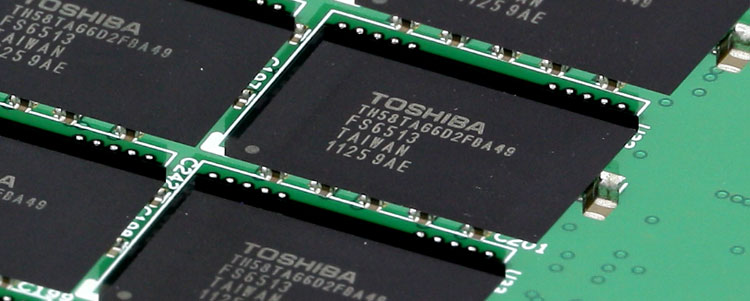Final words and conclusion
Final words and conclusion
The conclusion of many of our SATA3 SSD based review is going to be somewhat similar, whatever SATA 3 based product is being thrown at us, we seem to be impressed with. And you know, it's just that we are not used to seeing such incredible speeds as we've been in that SATA 2 HDD domain for way too long.
The WildFire series SSD from Patriot is again a product that will offer tremendous performance for hopefully an acceptable amount of money. Comparing apples to apples, SSDs like Corsairs Force series, and the OCZ Agility 3 and Vertex 3 are close to each other in performance. Overall IOPS performance is where they rock alright. Whether or not you'd ever physically notice or need so much IOPS performance is what we slowly start to doubt though.
The sheer peak performance, and then the sustained performance throughout of the SSD is fast. If you put a drive like this into your SATA 3 compatible laptop or SATA 3 compatible PC, you'll have no idea what is about to hit you.

That SandForce 2200 series Firmware bug? Initial batches of SSDs based on this controller had issues for a lot of people. Over the past few months there have been a lot of fixes and firmware updates for all board partners. Things seems to have stabilized with the latest firmwares, the Wildfire available in stores has the latest version in it.
Should you opt a SATA3 SSD then we have a couple of hints though, we absolutely prefer the performance of the Intel Series 6 (H67/P67/Z68) integrated SATA 6G controller over anything else available in the market. If you run an AMD chipset with the added Marvell 6G controller for example, you will see lower performance, make no mistake about that. Also make sure you run your drive in AHCI mode, it does make a difference. Read our recommendation on that to be able to solve and bypass the BSOD when going from SATA to AHCI.
SSDs -- use them as boot drive on Windows and applications and you instantly have removed a huge bottleneck, that mechanical HDD. It is a difference in-between night and day (in a proper system). For massive storage like movies, MP3 files and bulky data you do not access on a regular basis, sure that's where the HDD comes in. The magic simply is finding a good combination in-between the two. And that's where the magic happens. I kid you not, all my test systems and work systems run on SSDs, not once did an SSD fail on me, not once have I considered going back to HDDs. The benefits of a good SSD are simply grand. But that doesn't mean i do not understand the budget and cost dilemma that many of you are facing though.
The 25nm NAND Flash memory versus SSD lifespan, well the verdict isn't in just yet, but if you do the math based on very heavy consumer usage, it should not be worrying. That hypothesis flips around if you'd be planning to use it in a high traffic server or something. But even then it would probably last years. Admittedly, I still like the previous generation NAND FLASH ICs better though as the life-cycle of the NAND flash simply was double of what it is now, and what people seek is reliability, not cost effective methods that can shorten lifespan.
 So there you have it, if you are seeking massive performance in the storage segment then the Patriot Wildfire series offers just that, really good performance. Hopefully you can find it for a price that is acceptable for you. The product is fairly similar to OCZ and Corsair's SandForce 2281 Controller based products so ultimately I'd go for the best price, support and warranty if I where you, Patriot offers three years of it.
So there you have it, if you are seeking massive performance in the storage segment then the Patriot Wildfire series offers just that, really good performance. Hopefully you can find it for a price that is acceptable for you. The product is fairly similar to OCZ and Corsair's SandForce 2281 Controller based products so ultimately I'd go for the best price, support and warranty if I where you, Patriot offers three years of it.
We end this article with the words we always say, an SSD is the best upgrade a modern PC can use, your operating system flies, there are no waits which you normally have with an HDD, there's no noise and hardly any power consumption, it is the best upgrade any modern age PC can use. And if you have a SATA3 controller, the Patriot definitely is an appealing and recommended product.
- Leave/read comments on this product
- Sign up to receive a notice when we publish a new article
- Or go back to Guru3D's front page
